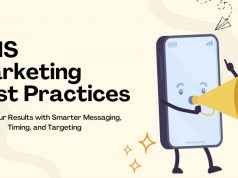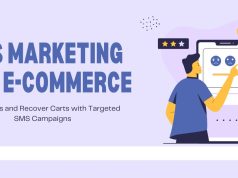SMS marketing has emerged as one of the most direct and effective ways to reach customers. With open rates exceeding 90% and response rates significantly higher than email, text message marketing offers businesses an immediate connection to their audience. But how exactly does SMS marketing work, and why should your business consider adding it to your marketing mix?
This comprehensive guide will walk you through everything you need to know about SMS marketing—from the technical mechanics to implementation strategies that drive real results.
What Is SMS Marketing?
SMS marketing involves sending promotional messages, updates, alerts, and offers directly to customers’ mobile phones via text messages. Unlike email marketing, which can sit unread in cluttered inboxes, SMS messages appear immediately on users’ screens and are typically read within minutes of delivery.
The process relies on Short Message Service (SMS) technology, which enables businesses to send text messages of up to 160 characters to mobile devices. When messages exceed this limit, they’re either split into multiple texts or sent as MMS (Multimedia Messaging Service) messages.
The Technical Foundation of SMS Marketing
How SMS Messages Travel
When you send an SMS marketing campaign, your message follows a specific path:
- Message Creation: You compose your message using an SMS marketing platform
- Platform Processing: The platform formats your message and prepares it for delivery
- Carrier Networks: Messages are routed through telecommunications carriers
- Delivery: The message arrives on the recipient’s mobile device
SMS Marketing Platforms
Most businesses use specialized SMS marketing platforms rather than sending messages individually. These platforms provide:
- Bulk messaging capabilities
- Contact list management
- Automated messaging sequences
- Analytics and reporting tools
- Compliance management features
Popular SMS marketing platforms include Twilio, Simple Texting, EZ Texting, and Constant Contact.
Building Your SMS Marketing Foundation

Obtaining Consent
Legal compliance forms the cornerstone of successful SMS marketing. In the United States, the Telephone Consumer Protection Act (TCPA) requires explicit consent before sending promotional text messages. This means customers must actively opt-in to receive your messages.
Common opt-in methods include:
- Keyword Campaigns: Customers text a specific word to your number
- Web Forms: Online signup forms on your website
- Point of Sale: In-person opt-ins at checkout
- QR Codes: Scanning codes that trigger opt-in processes
List Building Strategies
Growing your SMS subscriber list requires strategic planning and compelling incentives. Successful businesses often offer:
- Exclusive discounts for SMS subscribers
- Early access to sales or new products
- Helpful tips and information
- Contest entries or giveaways
- Appointment reminders and confirmations
Types of SMS Marketing Messages

Promotional Messages
These messages directly promote products, services, or special offers. Effective promotional SMS messages create urgency and include clear calls-to-action.
Example: “Flash Sale! 30% off all summer items today only. Use code SUMMER30 at checkout. Shop now: [link]”
Transactional Messages
Transactional messages provide important information about purchases, appointments, or account activities. These messages typically have higher open rates because customers expect and want this information.
Examples include:
- Order confirmations
- Shipping notifications
- Appointment reminders
- Account alerts
Informational Messages
These messages provide valuable information without direct sales pitches. They help build relationships and establish your business as a trusted resource.
Examples include:
- Weather alerts for outdoor businesses
- Health tips from medical practices
- Maintenance reminders from service companies
Creating Effective SMS Marketing Campaigns
Message Timing
Timing plays a crucial role in SMS marketing success. Research shows optimal sending times are:
- Weekdays: 10 AM to 8 PM
- Weekends: 12 PM to 4 PM
- Avoid: Early mornings (before 8 AM) and late nights (after 9 PM)
Consider your audience’s time zones and habits when scheduling campaigns.
Message Content Best Practices
Keep It Concise: With 160 characters per message, every word counts. Focus on your core message and call-to-action.
Create Urgency: Limited-time offers and exclusive deals motivate immediate action.
Personalize When Possible: Use recipients’ names or reference their purchase history.
Include Clear CTAs: Tell recipients exactly what you want them to do next.
Provide Value: Every message should offer something beneficial to the recipient.
Frequency Management
Finding the right messaging frequency prevents subscriber fatigue while maintaining engagement. Most successful campaigns send:
- 1-4 messages per month for promotional content
- As needed for transactional messages
- Weekly or bi-weekly for informational content
Monitor unsubscribe rates to gauge whether your frequency is appropriate.
Measuring SMS Marketing Success
Key Performance Indicators
Delivery Rate: Percentage of messages successfully delivered to recipients’ phones. Industry average: 95-98%.
Open Rate: Percentage of delivered messages that recipients open. SMS typically achieves 90-98% open rates.
Click-Through Rate: Percentage of recipients who click links in your messages. Average SMS CTR ranges from 7-15%.
Conversion Rate: Percentage of recipients who complete desired actions (purchases, bookings, etc.).
Opt-Out Rate: Percentage of subscribers who unsubscribe from your list. Healthy opt-out rates stay below 2-3% per campaign.
Analytics and Optimization
Most SMS marketing platforms provide detailed analytics including:
- Message delivery reports
- Link click tracking
- Subscriber growth metrics
- Revenue attribution
- Response tracking
Use this data to refine your messaging strategy, optimize send times, and improve campaign performance.
Compliance and Legal Considerations
TCPA Compliance
The Telephone Consumer Protection Act requires:
- Written consent for marketing messages
- Clear identification of your business
- Easy opt-out mechanisms
- Respect for “STOP” requests
GDPR and Privacy
If you serve customers in the European Union, GDPR requirements include:
- Explicit consent for data processing
- Clear privacy policies
- Data subject rights (access, deletion, portability)
- Secure data handling practices
Best Practices for Compliance
- Maintain detailed consent records
- Provide clear privacy policies
- Honor opt-out requests immediately
- Regularly clean your subscriber lists
- Train staff on compliance requirements
Integration with Other Marketing Channels
SMS marketing works most effectively when integrated with your broader marketing strategy.
Email Marketing Integration
Combine SMS and email campaigns for maximum impact:
- Use SMS for urgent, time-sensitive offers
- Follow up email campaigns with SMS reminders
- Cross-promote between channels
- Segment audiences based on channel preferences
Social Media Integration
- Promote SMS opt-ins on social media platforms
- Use SMS to drive traffic to social media content
- Create unified campaigns across all channels
- Track cross-channel customer journeys
Website Integration
- Add SMS opt-in forms to your website
- Use SMS for abandoned cart recovery
- Send SMS notifications for website updates
- Create SMS-exclusive landing pages
Advanced SMS Marketing Strategies

Automation and Drip Campaigns
Automated SMS sequences can nurture leads and maintain customer engagement:
- Welcome series for new subscribers
- Birthday and anniversary messages
- Post-purchase follow-ups
- Re-engagement campaigns for inactive subscribers
Segmentation Strategies
Divide your subscriber list based on:
- Purchase history
- Geographic location
- Engagement levels
- Demographics
- Preferences and interests
Two-Way Messaging
Enable subscribers to respond to your messages for:
- Customer service inquiries
- Survey responses
- Appointment scheduling
- Order updates and changes
Common SMS Marketing Mistakes to Avoid
Over-Messaging
Sending too many messages leads to high unsubscribe rates and damaged relationships. Respect your subscribers’ time and attention.
Ignoring Compliance
Failing to follow legal requirements can result in significant fines and legal issues. Always prioritize compliance over aggressive marketing tactics.
Generic Messaging
Mass messages without personalization or segmentation typically perform poorly. Tailor your messages to specific audience segments.
Poor Timing
Sending messages at inappropriate times annoys subscribers and reduces engagement. Research your audience’s preferences and habits.
Weak Call-to-Actions
Vague or unclear CTAs reduce campaign effectiveness. Be specific about what you want recipients to do.
Getting Started with SMS Marketing
Choosing the Right Platform
Consider these factors when selecting an SMS marketing platform:
- Pricing structure (per message vs. monthly fees)
- Feature set (automation, analytics, integrations)
- Compliance tools and support
- User interface and ease of use
- Customer support quality
- Integration capabilities
Setting Up Your First Campaign
- Define Your Goals: Determine what you want to achieve with SMS marketing
- Build Your List: Start collecting opt-ins using various methods
- Create Your Messages: Develop compelling, compliant content
- Test and Refine: Start with small campaigns and optimize based on results
- Scale Up: Gradually increase your sending volume and frequency
The Future of SMS Marketing
SMS marketing continues evolving with new technologies and consumer behaviors. Emerging trends include:
- Rich Communication Services (RCS) for enhanced messaging
- AI-powered personalization and automation
- Integration with voice assistants and IoT devices
- Advanced analytics and predictive modeling
- Cross-channel attribution and optimization
Your Next Steps in SMS Marketing
SMS marketing offers businesses a powerful tool for direct customer communication. With proper planning, compliance, and execution, it can significantly boost engagement, sales, and customer loyalty.
Start by choosing a reputable SMS marketing platform that meets your business needs. Focus on building a quality subscriber list through compelling opt-in incentives. Create valuable, timely messages that respect your audience’s time and preferences.
Remember that successful SMS marketing requires ongoing optimization. Monitor your metrics, test different approaches, and continuously refine your strategy based on results. With patience and persistence, SMS marketing can become a cornerstone of your customer communication strategy.
The key to long-term success lies in viewing SMS marketing not as a standalone tactic, but as part of an integrated approach to customer engagement. When done right, it creates meaningful connections that drive business growth while providing genuine value to your customers.
To build a stronger mobile strategy, it helps to understand how SMS marketing works in detail, alongside learning how programmatic advertising functions in mobile marketing to automate and optimize campaign performance.









